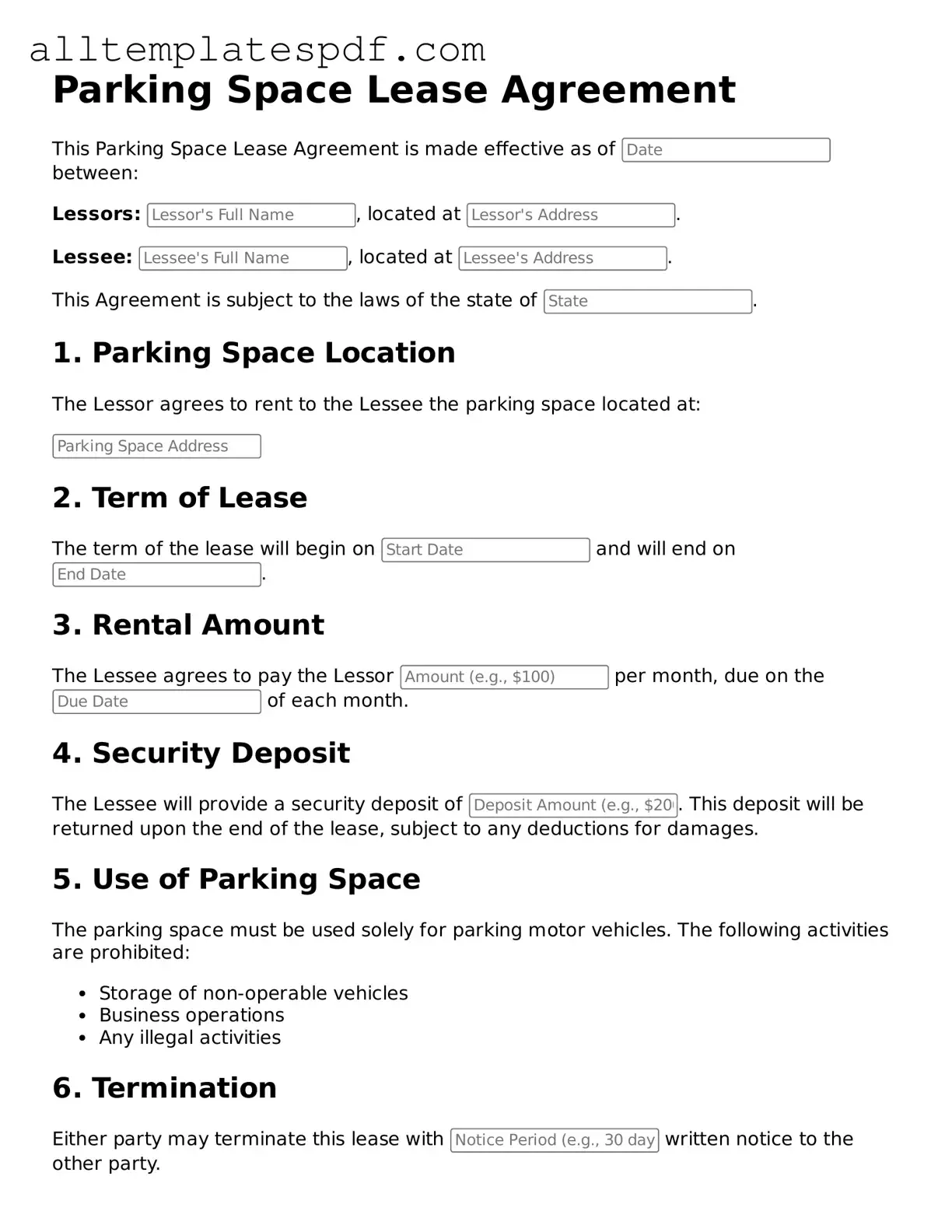Filling out a Parking Space Lease Agreement can seem straightforward, but many people make common mistakes that can lead to confusion or disputes later on. One frequent error is neglecting to include the correct lease term. It is essential to specify the start and end dates clearly. Without this information, both parties may have different expectations about the duration of the lease.
Another common mistake is failing to provide accurate contact information. Both the lessor and lessee should include their full names, phone numbers, and email addresses. Incomplete contact details can hinder communication and complicate any necessary follow-ups.
Some individuals forget to specify the payment terms. It is crucial to outline the amount due, the payment schedule, and acceptable payment methods. Omitting these details can lead to misunderstandings regarding rent payments and responsibilities.
People often overlook the importance of including security deposit information. If a security deposit is required, the agreement should clearly state the amount, the conditions for its return, and any deductions that may apply. This clarity helps protect both parties' interests.
Another frequent oversight is not addressing maintenance responsibilities. The agreement should outline who is responsible for maintaining the parking space. This includes details about repairs, cleaning, and any other upkeep necessary to keep the space in good condition.
In some cases, individuals fail to mention permitted uses of the parking space. It is important to specify what types of vehicles are allowed and whether any restrictions apply. This prevents potential conflicts over vehicle types and usage.
Many people also neglect to include a termination clause. This clause should outline how either party can terminate the lease, including any required notice periods. Having this information in writing can prevent disputes if one party wishes to end the agreement early.
Another mistake involves not having the agreement signed by both parties. A lease agreement is not legally binding unless it is signed. Ensure that both the lessor and lessee sign and date the document to validate the agreement.
Finally, individuals sometimes fail to keep a copy of the signed agreement. It is crucial for both parties to retain a copy for their records. This helps ensure that everyone has access to the same information and can refer back to the agreement if any issues arise.
